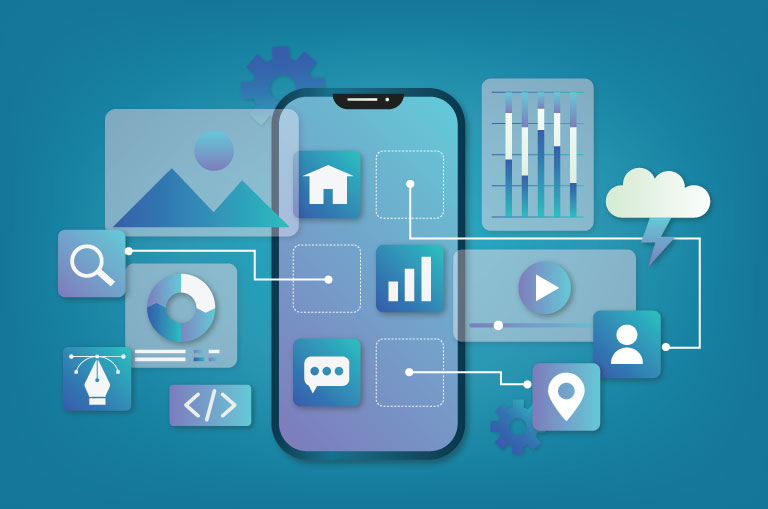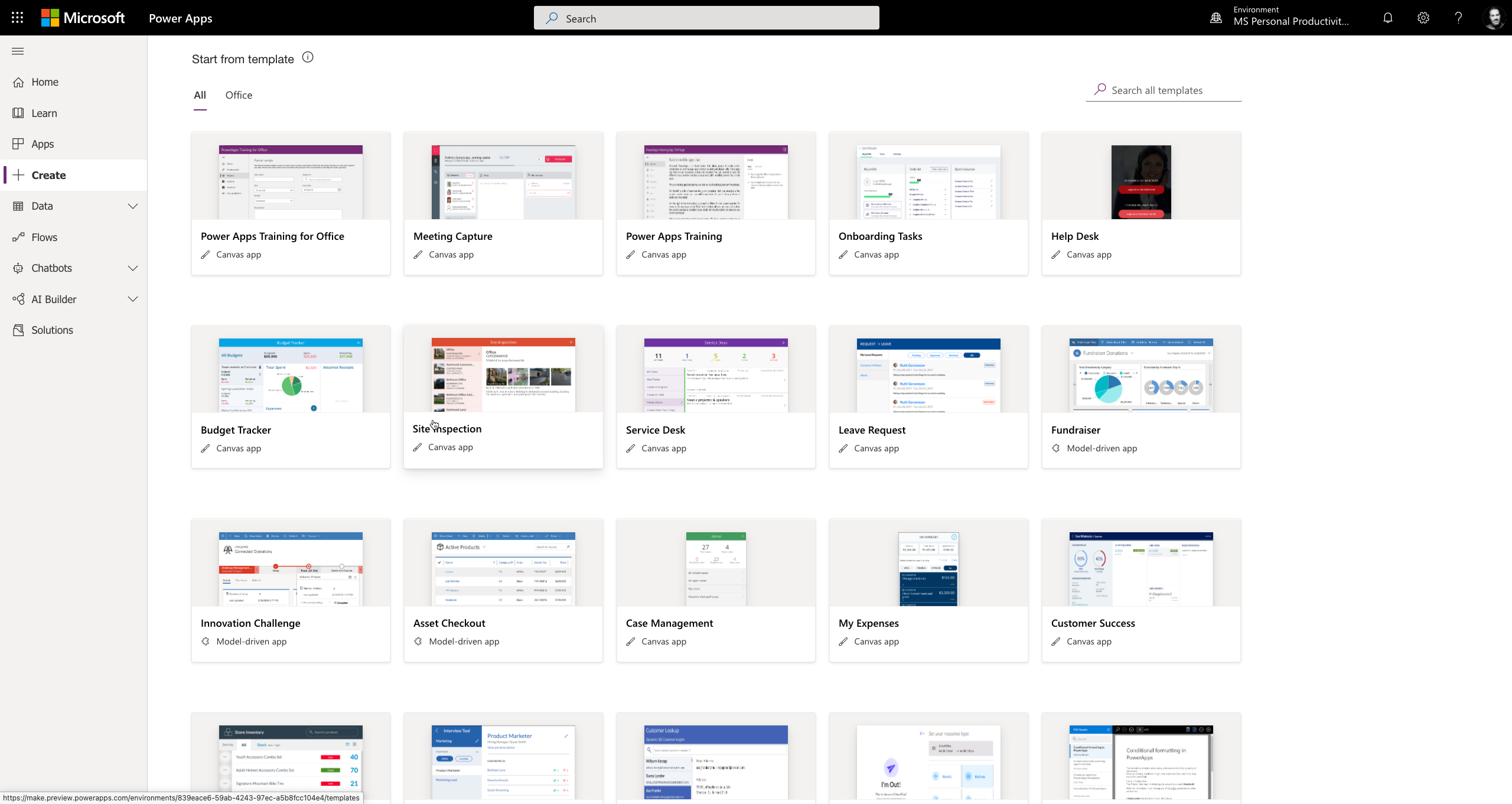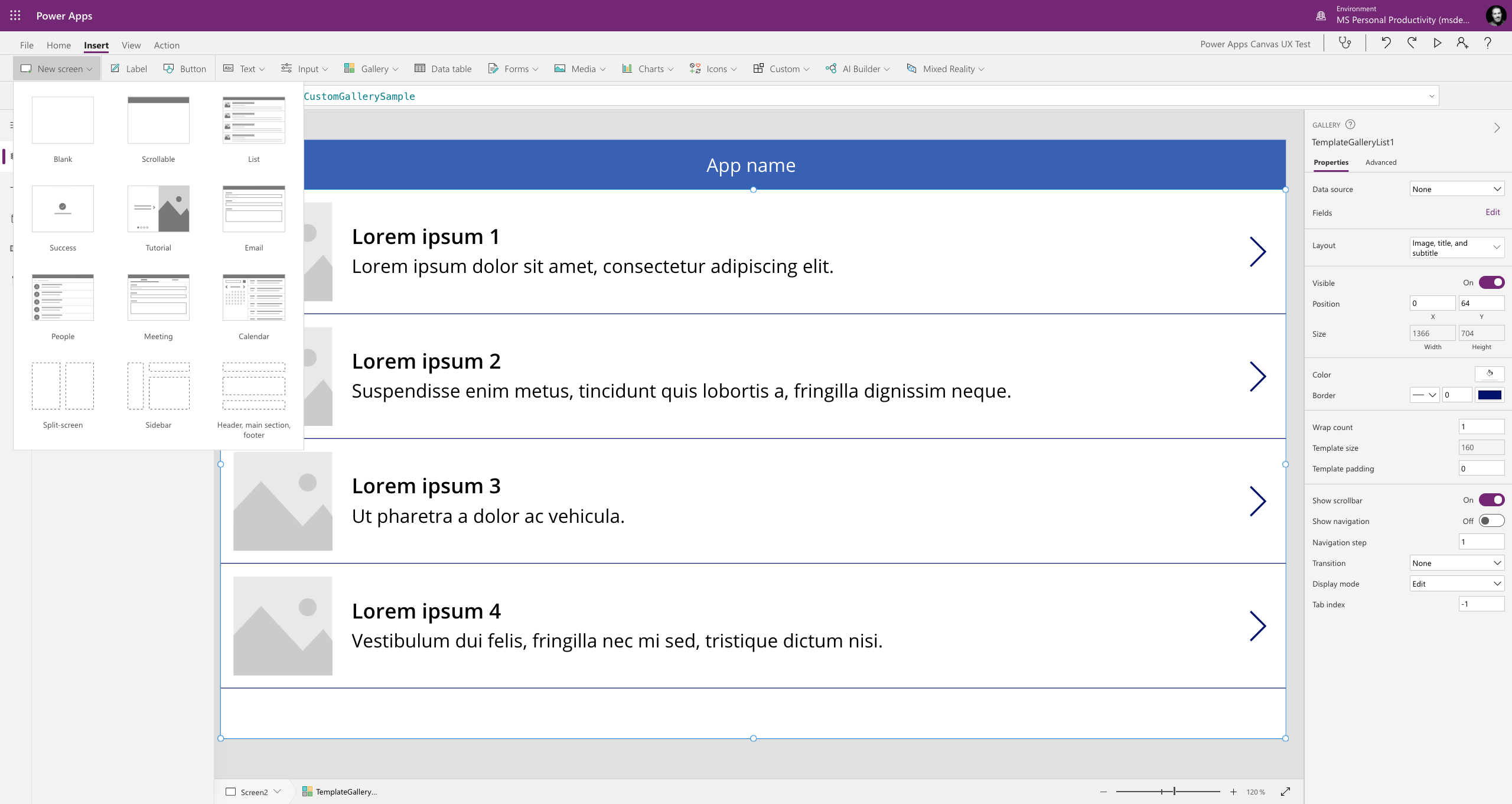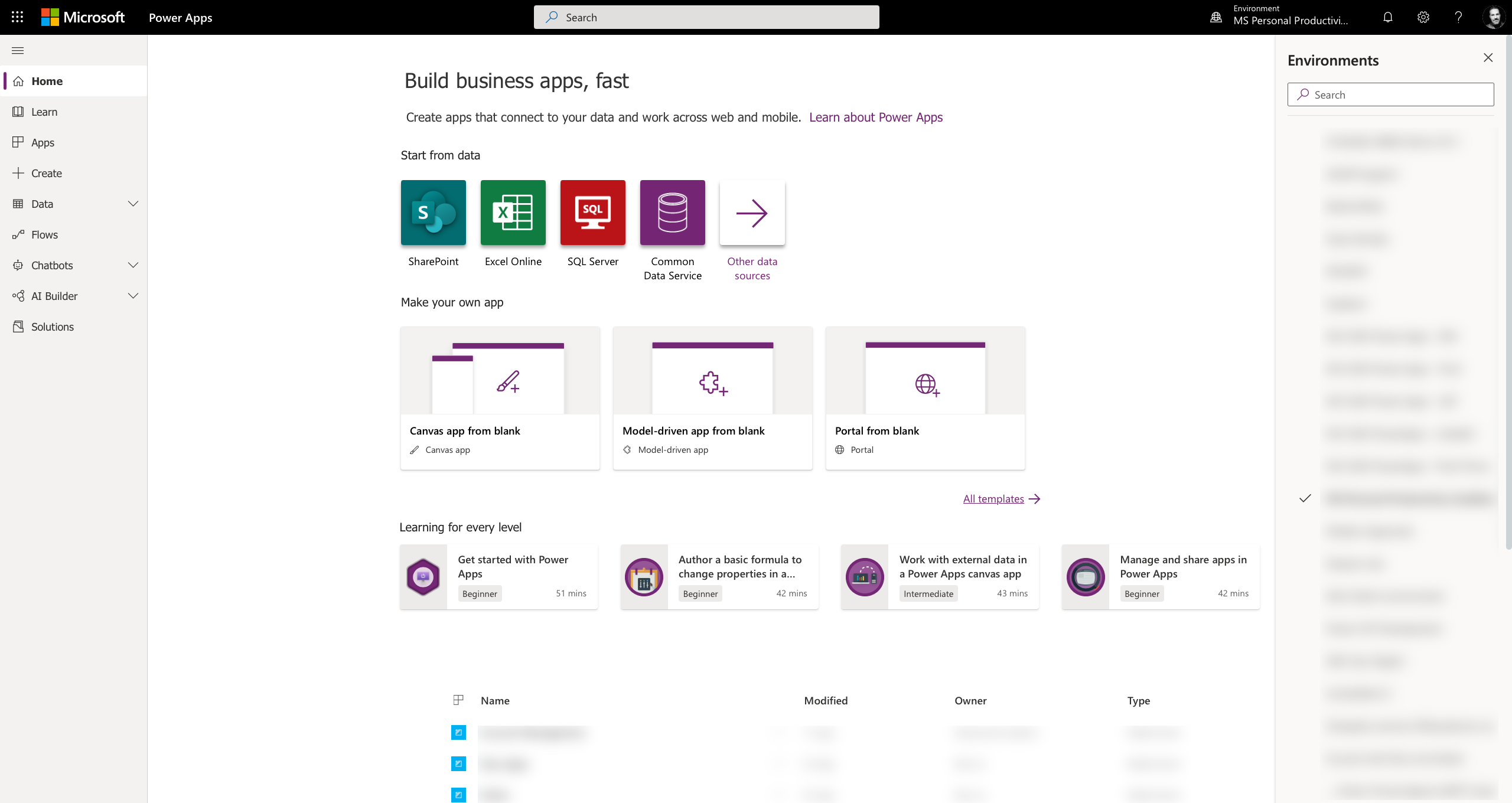The Future of Low-Code Development with Power Apps
Are you aware that creating applications can now be achieved without delving deeply into coding? Microsoft's Power Apps is at the forefront of this technological revolution, offering a platform that simplifies the app development process. This innovative tool is part of a movement towards low-code development, a trend that democratizes the creation of digital solutions, enabling both seasoned developers and those with minimal coding experience to efficiently bring their ideas to life. By lowering the traditional barriers to software development, Power Apps empowers organizations to quickly adapt to new challenges and opportunities, heralding a new era of digital agility and inclusivity.

The Evolution of Power Apps
Since its launch, Power Apps has significantly altered the landscape of app development, making it accessible to a broader range of users. This evolution represents a pivotal shift from traditional coding to a more inclusive model, where the complexities of software development are abstracted behind intuitive interfaces and pre-built templates. Power Apps has been instrumental in enabling organisations to innovate at speed, turning concepts into functional applications rapidly and with less reliance on specialised coding skills.
The platform's growth has been characterised by several key developments aimed at enhancing its usability, functionality, and integration capabilities. Initially designed to make app development easier for business users, Power Apps has continually expanded its offerings to include more advanced features, such as AI and machine learning integration, which allow for the creation of smarter, more responsive applications. This evolution reflects a broader trend in the technology sector towards leveraging AI to automate complex processes and make technology more accessible to non-technical users.

One of the most significant milestones in the evolution of Power Apps has been its commitment to fostering a community of users and developers. By enabling the sharing of templates, connectors, and custom components, Power Apps has cultivated a rich ecosystem of resources that facilitate collaboration and innovation. This community-driven approach has accelerated the adoption of the platform, making it a staple in the toolkits of organisations looking to streamline their operations and enhance their digital presence.
Furthermore, Power Apps' integration with the broader Microsoft ecosystem, including Dynamics 365, Microsoft 365, and Azure, has opened up new avenues for automation and data analysis, reinforcing its position as a comprehensive solution for digital transformation. This seamless integration ensures that organisations can leverage their existing investments in Microsoft technologies, enhancing efficiency and reducing the need for disparate tools.
As we look to the future, Power Apps is set to continue its trajectory of innovation, with ongoing enhancements aimed at improving user experience, expanding AI capabilities, and strengthening its governance and security features. This forward-looking approach ensures that Power Apps remains at the cutting edge of low-code development, empowering organisations to meet the challenges of the digital age head-on.
AI and Machine Learning Integration in Power Apps
The integration of AI and machine learning into Power Apps marks a significant advancement in the low-code development arena, propelling the capabilities of applications built on the platform to new heights. This leap forward is not just about simplifying the app development process; it's about enriching applications with intelligent features that can predict, automate, and transform data into actionable insights.
At the heart of this integration is the ability to utilise pre-built AI models, which can be incorporated into applications without the need for in-depth machine learning expertise. This democratises access to powerful AI functionalities, allowing developers and business users alike to enhance their applications with advanced analytics, cognitive services, and custom AI solutions. The significance of this integration lies in its potential to streamline operations, provide personalised user experiences, and make informed decisions based on predictive analytics.
Moreover, Power Apps leverages AI to improve the development process itself. Features such as AI Builder offer a guided, no-code interface to automate processes and predict outcomes, making it easier for users to create complex, data-driven applications. For instance, AI Builder can be used to process forms using optical character recognition , predict outcomes based on historical data, and automate classification and processing of information.
The role of AI and machine learning in Power Apps is also evident in its ability to understand and interpret natural language, enabling users to describe what they need in plain English and have the platform generate the necessary components of an application. This capability, powered by AI-driven insights, significantly reduces development time and makes app creation more intuitive and accessible.
The continuous evolution of AI and machine learning technologies promises to further expand the capabilities of Power Apps. As these technologies become more sophisticated, the platform is expected to offer even more advanced AI functionalities, making it possible for organisations to tackle complex problems with innovative solutions. This integration not only enhances the value of applications developed with Power Apps but also underscores the platform's commitment to staying at the forefront of digital transformation trends.
Enhancing User Experience with Power Apps
Power Apps is revolutionising the app development landscape not only through its low-code approach but also by significantly enhancing the UX of applications created on its platform. This commitment to UX is evident in the platform's continuous improvements to design functionalities, making app creation more intuitive and the resulting applications more engaging and user-friendly.
A key aspect of this UX enhancement is the platform's design capabilities, which empower developers and business users to create applications that are not only functional but also aesthetically pleasing and easy to navigate. Power Apps provides a variety of pre-designed templates and themes, which can be customized to suit the specific needs of a project. This flexibility ensures that applications can maintain brand consistency while catering to the unique requirements of each user.

Furthermore, Power Apps leverages AI to convert sketches and images into application components, streamlining the design process. This feature is particularly beneficial for users who may have a visual idea of an app but lack the technical skills to create it from scratch. By allowing users to upload images or sketches of UI layouts, Power Apps can interpret these inputs and suggest corresponding components, significantly reducing the time and effort required to bring an app's design to life.
The platform also focuses on responsive design, ensuring that applications built with Power Apps perform seamlessly across various devices and screen sizes. This cross-platform compatibility is crucial for delivering a consistent user experience, regardless of how or where the application is accessed. The ability to create apps that are equally functional and visually appealing on desktops, tablets, and smartphones enhances accessibility and user engagement.
Power Apps' commitment to improving UX extends to its user interface (UI) elements and controls, which are designed to be both modern and intuitive. Regular updates introduce new controls and features that respond to user feedback and emerging UX trends, ensuring that applications remain current and meet users' evolving expectations.
In essence, the enhancements in UX design within Power Apps are pivotal in making app development more accessible and the resulting applications more effective. By prioritising user experience, Power Apps not only simplifies the development process but also ensures that applications built on its platform can deliver maximum impact, driving digital transformation and enabling organisations to better meet the needs of their users.
Integration of Power Apps with the Broader Microsoft Ecosystem
Power Apps is not an isolated tool but a key component of the broader Microsoft ecosystem, designed to work seamlessly with a suite of products and services. This integration enhances Power Apps' utility as a comprehensive development platform, offering several benefits to organisations:
- Seamless Data Connectivity: Power Apps integrates with Microsoft Dataverse, allowing for easy access and manipulation of data across Microsoft Dynamics 365, Microsoft 365, and Azure. This seamless data connectivity ensures that apps can leverage up-to-date information from across the business ecosystem, enhancing functionality and user experience.
- Extended Functionality with Microsoft 365: Users can create applications that integrate directly with their Microsoft 365 suite, including Outlook, Teams, and SharePoint. This allows for the development of solutions that enhance productivity and collaboration within the familiar interface of Microsoft 365 applications.
- Leveraging Azure Services: The integration with Azure offers advanced services like AI, machine learning, and analytics, enabling the development of more intelligent and data-driven applications. Power Apps can utilise Azure's computational power and scalability to handle complex processing tasks, making it easier to build sophisticated applications.
- Unified Development Experience: Developers can extend the capabilities of their Power Apps solutions using Azure Functions and custom connectors, providing a unified experience across the development lifecycle. This integration supports more complex scenarios, including those requiring custom logic or integration with non-Microsoft services.
- Enhanced Automation with Power Automate: Power Apps' integration with Power Automate allows users to automate workflows and processes across their apps and Microsoft services, streamlining operations and reducing manual tasks. This connection enables the creation of powerful business solutions that can automate tasks across the entire Microsoft ecosystem.
- Data Visualisation with Power BI: Integrating Power Apps with Power BI enables users to embed interactive data visualisations into their applications. This provides end-users with rich insights and analytics directly within the apps, enhancing decision-making processes.

This extensive integration with the Microsoft ecosystem amplifies the power of Power Apps, enabling organisations to build more connected, intelligent, and responsive applications. By leveraging the strengths of each component within the ecosystem, businesses can unlock new levels of efficiency, innovation, and growth, further driving their digital transformation initiatives.
Future Directions and Challenges for Power Apps
As Power Apps continues to shape the future of low-code development, it faces a landscape of both exciting opportunities and significant challenges. The platform's trajectory is set towards further democratising app development, but this path is not without its hurdles.
Future Directions
- Increased AI Integration: Power Apps is expected to deepen its integration with AI and machine learning, offering even more sophisticated capabilities that can predict user needs, automate complex processes, and provide advanced analytical insights directly within the app development environment.
- Enhanced Data Connectivity and Integration: Expanding the platform's ability to connect with a broader range of data sources, both within and outside the Microsoft ecosystem, will be crucial. This includes enhancing API capabilities and offering more pre-built connectors to popular external services.
- Improved Accessibility and Inclusivity: Making the platform more accessible to users with disabilities and supporting a wider range of languages and regional settings will be key to broadening its user base globally.
- Focus on Developer Productivity: Providing more tools and features that streamline the development process, reduce redundancy, and automate routine tasks will help developers focus on creating more innovative and complex applications.
Challenges
- Maintaining Security and Compliance: As the platform grows, ensuring that applications built with Power Apps meet the highest standards of security and compliance becomes increasingly complex, especially in regulated industries.
- Balancing Simplicity with Complexity: As Power Apps evolves to include more advanced features, maintaining its low-code, user-friendly ethos while supporting more complex development scenarios will be a delicate balance to strike.
- Scalability: Ensuring that applications can scale efficiently with growing user numbers and data volumes without compromising performance will be an ongoing challenge.
- Education and Adoption: Encouraging wider adoption of Power Apps in the enterprise space requires continuous education and support to demonstrate the platform's capabilities and how it can solve business challenges.
- Integration Challenges: While integration with the Microsoft ecosystem is a strength, ensuring seamless operation across all these services, especially as they themselves evolve, presents an ongoing challenge.
The future of Power Apps is bright, with the potential to significantly impact how businesses approach digital transformation. However, navigating the challenges ahead will require a focus on innovation, user feedback, and a commitment to security and performance. As Power Apps moves forward, it will undoubtedly continue to be a key player in the low-code development space, driving efficiency, creativity, and inclusivity in app development.
Conclusion
The journey through the evolution, integration, and future of low-code development with Power Apps has illuminated its transformative impact on the digital landscape. Power Apps has redefined the boundaries of app development, empowering individuals and organisations alike to bring their innovative visions to life with unprecedented speed and efficiency. As we've explored, its integration with AI and machine learning, coupled with its seamless connectivity within the Microsoft ecosystem, positions Power Apps as a potent tool for digital transformation.
Looking ahead, Power Apps stands on the brink of further revolutionising the low-code development space, with advancements in AI, data integration, and user experience on the horizon. Yet, as the platform evolves, it will undoubtedly face challenges, from maintaining security and compliance to balancing simplicity with the needs of more complex development projects. Overcoming these hurdles will be key to fulfilling the promise of low-code development as a democratizing force in technology.
In conclusion, Power Apps represents more than just a tool for creating applications; it is a catalyst for innovation, inclusivity, and efficiency. As organisations continue to navigate the complexities of digital transformation, Power Apps offers a beacon of agility and empowerment. By leveraging the platform's capabilities, businesses can unlock new levels of creativity, solving problems and seizing opportunities in ways that were previously unimaginable. The future of low-code development with Power Apps is not just about technology; it's about the doors it opens for every person to make an impact in their world.
For businesses looking to effectively implement and optimize Microsoft Power Apps within their own digital transformation strategies, discovering expert guidance and support can accelerate success. Learn more about how Microsoft Power Platform services can help you harness the full potential of Power Apps in your organization here.

